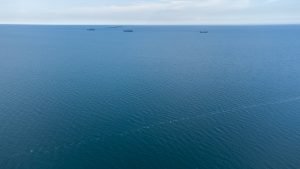Recent events in the Red Sea have brought to the fore another security vulnerability, that of the security of undersea telecommunications cables.
UAE officials in early March said that three cables running through the Red Sea had been possibly attacked by Yemen’s Houthi rebels, although the Houthis themselves denied it. The cables provide connectivity for both internet and telecommunications across different regions. The media report noted that the alleged attack tampered with many communication cable lines, including Asia-Africa-Europe 1, the Europe India Gateway, Seacom and TGN (Tata Global Network)-Gulf, and Hong Kong-based HGC Global Communications.
Reportedly, the cuts impacted 25 percent of the communications passing through Red Sea from Asia to Europe. Many companies have had to take immediate remedial steps, including re-routing, in order to limit the effect of the cable cuts. Tata Communications for instance said that they are “keeping a close watch on the situation and [had] initiated immediate and appropriate remedial actions.” Tata Communications added that they “invest in various cable consortiums to increase our diversity and hence in such situations of a cable cut or snag we are able to automatically reroute our services, thereby ensuring our customers have a stable, reliable and scalable connectivity.”
The Red Sea has long been considered a maritime shipping choke point but it is also “an internet and telecommunications bottleneck,” according to experts at the Center for International and Strategic Studies (CSIS). With around 90 percent of communications between Europe and Asia, as well as 17 percent of global internet traffic, passing through cables under the narrow Bab al-Mandab Strait, it is a major chokepoint for the communication sector.
Undersea cables are critical infrastructure with important implications for the global economy and communication system connecting different regions. According to a recent Congressional Research Service (CRS) report, “commercial undersea telecommunication cables carry about 99% of transoceanic digital communications (e.g., voice, data, internet), including financial transactions.” The report added that there there are more than 500 commercial undersea cables owned and operated by individual private companies as well as consortia of companies; these cables have become the mainstay of the global internet.
The importance of these cables, covering over 1.4 million kilometers connecting literally every country in the world, cannot be ignored. With more big companies entering the fray, this number will likely go up in the coming years. Already, big global firms such as Amazon, Google, Meta, and Microsoft dominate the scene, owning or leasing around half of all undersea bandwidth. But such heavy dependence can mean a significant vulnerability and in turn calls for greater protection.
There have been intentional and unintentional attacks on undersea cable infrastructure. The Nord Stream pipeline attack in September 2022 highlighted the vulnerability faced by such cables and led to calls for ensuring better protective measures for undersea telecommunication cables. In terms of intentional attacks on telecommunication cables, two incidents in April and October 2022 are noteworthy, when multiple cables were cut in southern France. This appeared to have been a coordinated and targeted attack. A cloud security company, Zscaler, in a blog post said that the attack “impacted major cables with connectivity to Asia, Europe, [the] U.S. and potentially other parts of the world.”
There have been also many natural events that have cut or damaged cables, resulting in interference and disruptions in communication. Undersea cable damage in Tonga, a South Pacific archipelago nation, after a volcanic eruption in January 2022 is a case in point. Cloudfare said in a blog post that internet connections had been restored after 38 days, following the successful completion of repairs to the undersea cable. Equally critical to note is that cable repair is extremely challenging and expensive. In the Tonga case, it was estimated that the daily costs for the ship responsible for repairing the cable, the CS Reliance, was between $35,000 and $50,000.
It is, however, an increasing challenge to identify if damage to undersea cables is intentional or the result of natural events or accidents. Analysts have noted that damage can be caused by fishing nets, weather, ship anchors, sharks, or even sinking cargo ships, as was seen in the recent Red Sea incident. Inability to make a distinction between intentional attacks and accidents can be problematic for a couple of different reasons. First, potential saboteurs can benefit from the difficulty in determining specific causes of damage. And second, this ambiguity generates challenges in terms of governance and regulatory measures aiming to better undersea cable security.
There are no easy answers to dealing with undersea cable security. First and foremost, along with cybersecurity and protection of other vital infrastructure, undersea cables need to be treated as critical infrastructure. The need to acknowledge the vulnerability this poses to global communication systems is the first step. A second step may be for firms to invest in diverse cable consortiums so that it is possible to re-route and thereby create redundancy in order to mitigate the effects of undersea cable disruptions.
Also, the protection of undersea cables can be pursued through minilateral groupings such as the Quad. The Quad in May 2023 announced a new initiative for undersea cable protection in the Indo-Pacific, called the “Quad Partnership for Cable Connectivity and Resilience” as part of its broader efforts to develop better and more resilient infrastructure. Considering that the potential damage to undersea cables can affect all countries, a larger global multilateral effort should also be undertaken, despite the fact that multilateral efforts are increasingly threatened by rising great power competition.

































